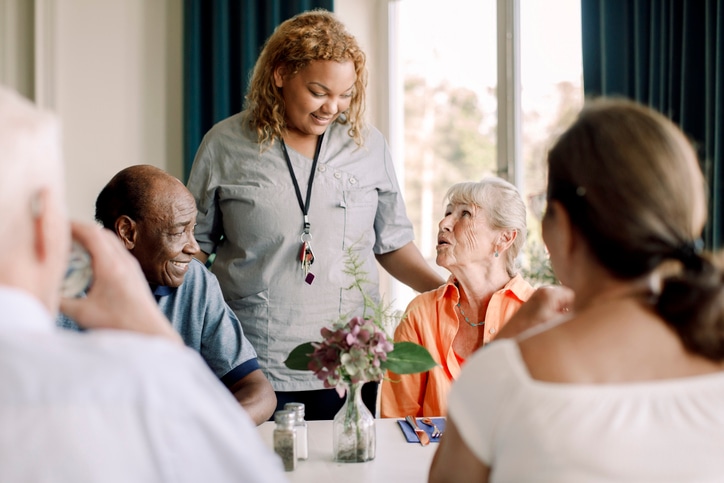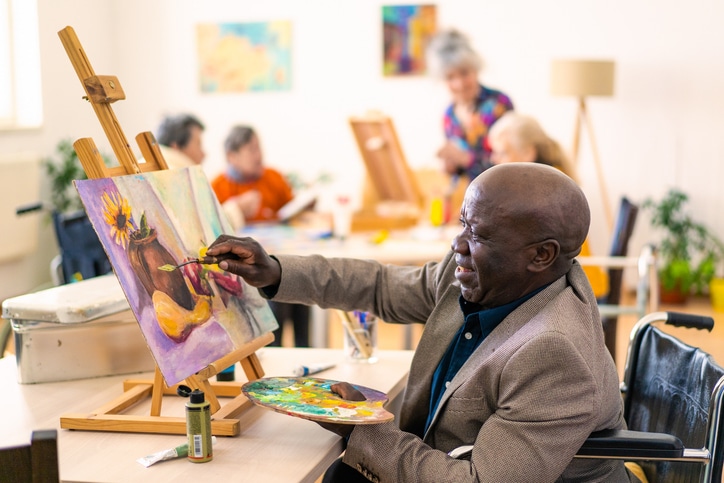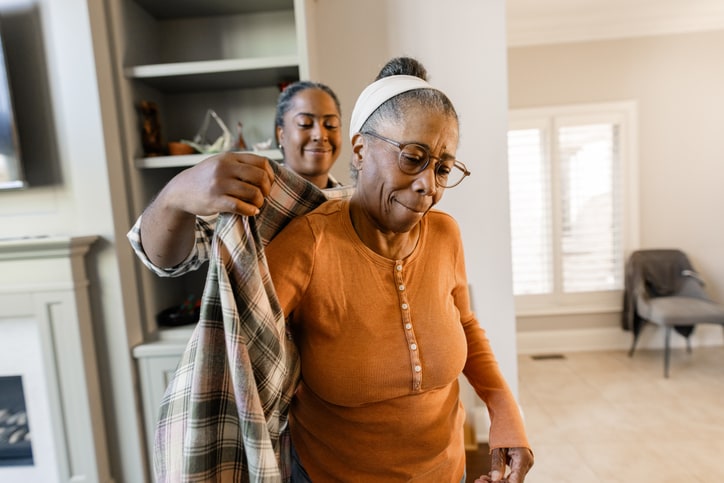In this article
As the aging population continues to grow, so too do the needs of seniors. Americans are living longer putting more emphasis than ever on how long-term care options like assisted living will support older adults who want to continue to live independently.
“Assisted living facilities have evolved from their early days when the focus was primarily on helping residents with basic daily activities, like dressing, bathing and taking medications,” explains Grace Ferri, a health care expert with over 20 years’ experience and chief marketing officer at United Hebrew of New Rochelle, a senior living community in New Rochelle, New York. “Today, these communities offer a much broader range of services that reflect the changing needs and expectations of older adults.”
Wondering exactly what assisted living provides? Here, experts list standard assisted living services families can expect, plus offer insight on new services many communities are offering in order to better meet resident needs.
Key takeaways
- Assisted living provides seniors with a supportive environment that features personalized care, social activities, safety, security and comfortable living spaces.
- Communities that support a greater number of assisted living levels of care tend to provide more services since their residents’ needs are more diverse.
- Assisted living never directly offers skilled nursing services; however, some communities partner with other professionals to offer this type of care.
What do assisted living facilities provide?
Assisted living communities provide a supportive living environment for older adults who need assistance with activities of daily living (ADLs) but don’t require the intensive medical care of a nursing home. According to Sandi Petersen, a doctor of nursing practice and the senior vice president of health and wellness at Pegasus Senior Living, there are four key features every assisted living facility provides:
- Personalized care: Tailored support based on individual needs.
- Social activities: Opportunities for social engagement and recreational activities.
- Safety and security: 24-hour staff availability and emergency response systems.
- Comfortable living spaces: Private or semi-private apartments with common areas for socializing.
Most assisted living communities allow residents to bring their own furnishings, Petersen adds, and a growing number are allowing pets. These offerings can help ease the transition into assisted living, as well as ensure seniors’ unique personal needs are met.
“Facilities are putting a bigger emphasis on quality of life,” Ferri says. “As baby boomers move in, there’s a growing demand for choice, autonomy and cultural sensitivity, pushing assisted living providers to offer more engaging, customized experiences to residents.
8 assisted living services included in most communities
Assisted living services vary from community to community based on a few factors. In general, facilities that support a greater number of assisted living levels of care tend to provide more services since their residents’ needs are more diverse, explains Jay Mikosch, campus director of senior living at Wellington Bay, a luxury assisted living community in Wellington, Florida.
“State regulations may also vary and dictate to what extent a community is able to provide assistance,” Mikosch says. “For example, in Florida, residents must be able to bear weight and assist with transfers, and mechanical lifts cannot be used to transfer residents.”
No matter the facility you choose or your location, however, these are the most common assisted living services you can expect to find, according to experts:
- Personal care services. Including assistance with ADLs such as dressing, grooming, bathing, eating, toileting and transferring.
- Medication management. “This ensures that residents take their medications correctly and on time, reducing the risk of medication errors and improving overall health,” Petersen says. If you or your loved one wish to manage your own medications, the community may require a “self-medication assessment.”
- Nutritious meals. Including three meals a day which can be catered to dietary restrictions and preferences.
- Communal, restaurant-style dining. To enhance social opportunities and connection, a shared space for meals and regular dining service is standard in assisted living.
- Housekeeping and maintenance. Including cleaning services, laundry and linen services, as well as handy-man services to ensure a safe and comfortable living environment while reducing the burden on residents and their families, Petersen says.
- Social and recreational activities. Activities for seniors provided by assisted living range from art classes to cultural, musical and spiritual programming, Ferri says.
- Access to exercise. Whether it is an outdoor space or indoor gym, assisted living communities offer fitness amenities, and most include exercise classes as well.
- Transportation. “This service facilitates access to medical appointments, shopping, and social activities, promoting independence and reducing isolation,” Petersen says. “Many communities offer transportation as a ‘perk’ of living in the facility; others may have a trip charge associated with use of community transportation.”
“Facilities are putting a bigger emphasis on quality of life… there’s a growing demand for choice, autonomy and cultural sensitivity, pushing assisted living providers to offer more engaging, customized experiences to residents.”
— Grace Ferri, health care and senior living expert
Additional services assisted living communities may offer
Now more than ever, assisted living communities are beginning to specialize in serving individuals with specialized support needs. Here are the additional services they’re offering to do it:
Specialized memory care services
Memory care programs for those with Alzheimer’s or dementia are becoming increasingly more common in assisted living, according to Ferri. In fact, 18% of assisted living communities have a dementia care unit to provide these dementia-related services:
- Sensory-friendly environments.
- Intentional internal layout and design.
- Services related to health, hygiene and holistic wellness.
- Increased security to limit wandering.
- Personalized care plans to support ADLs.
Coordinated health care services
According to NCAL, many assisted living communities may offer more advanced medical support on-site, including access to nurses and specialists, by partnering and planning with other providers to offer these types of health care services:
- Therapy (physical, occupational or speech).
- Pharmacy or access to a pharmacist.
- Hospice care.
- Podiatry.
- Dental services.
- Access to nurses and nursing care.
- Mental health screening or counseling.
Services assisted living communities do not provide
Despite coordinated health care services becoming more common, Mikosch notes that assisted living communities never directly offer daily skilled nursing facility services, including:
- Intensive, 24-hour medical care and monitoring.
- Intravenous (IV) delivery of fluids, nutrients, blood or medication.
- Feeding tube and catheter management.
- Wound care and cleaning.
- Pain management and post-surgical care.
- Short-term rehabilitation services billed to a resident’s Medicare or other insurance plan.
“I always say that there is a community for everyone. It’s important to find the one that checks as many of the boxes as possible so that the resident’s experience is the best it can be.”
— Jay Mikosch, senior living director
Final tips to find assisted living that meets your needs
The experts we spoke with agree that all prospective assisted living residents and their families should start by consulting a physician to review and confirm individual care needs — and to start the process early. “Since some care facilities have a waitlist, it’s important that family members agree on a care plan before a health crisis, such as an unexpected fall or illness, occurs,” Ferri says.
Ferri also recommends keeping the future in mind. “Even if you or your loved one is best suited to an assisted living community now, it’s beneficial to seek senior living options that can provide a continuum of care and services that will allow you to age in place for the long-term.”
Finally, once you have a care plan in place, Mikosch recommends touring several assisted living communities to compare and contrast their services and offerings. “Each community is unique and has its own culture,” Mikosch says. “I always say that there is a community for everyone. It’s important to find the one that checks as many of the boxes as possible so that the resident’s experience is the best it can be.”





